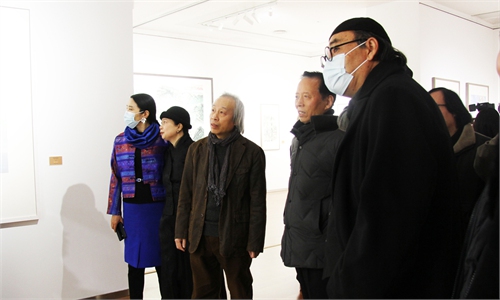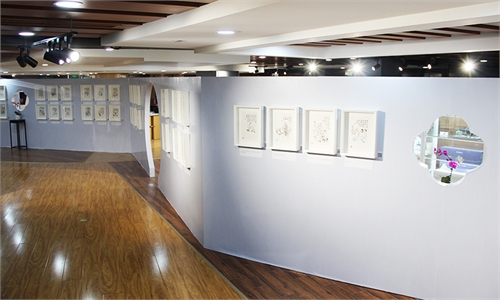ARTS / CULTURE & LEISURE
East Asia’s oldest rock paintings found along China’s Jinsha River
Ancient legacy
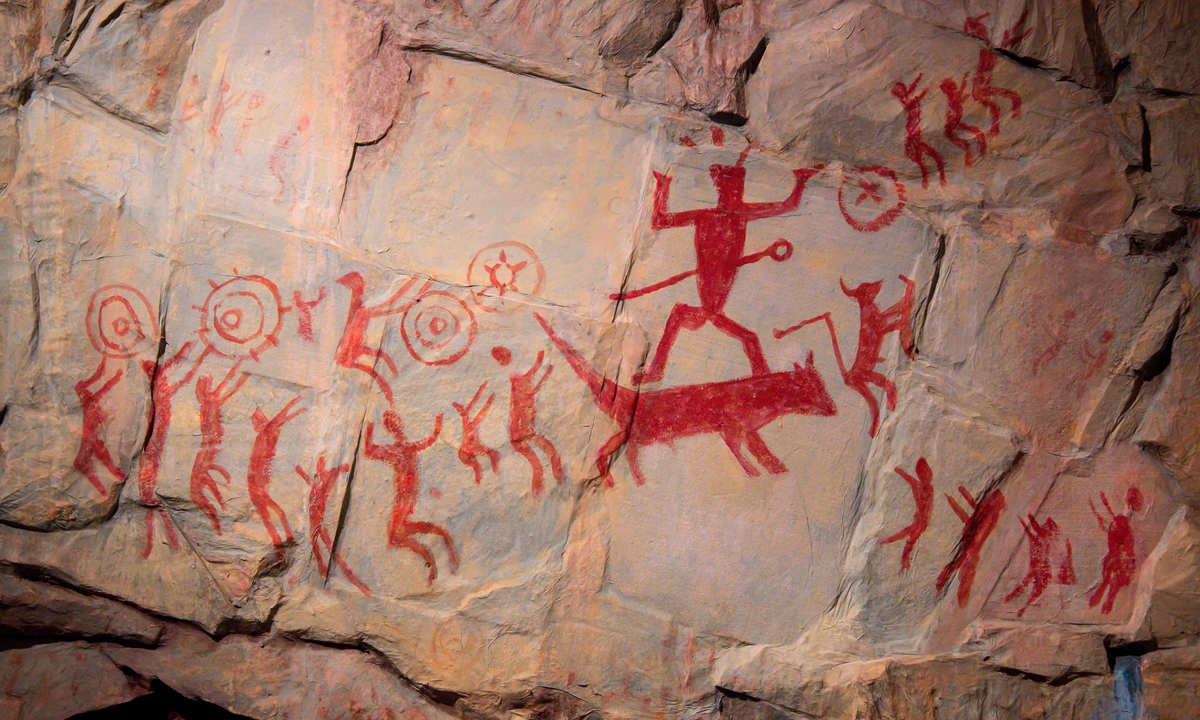
A replica of a Zuojiang rock painting in Guangxi Zhuang Autonomous Region Photo: IC
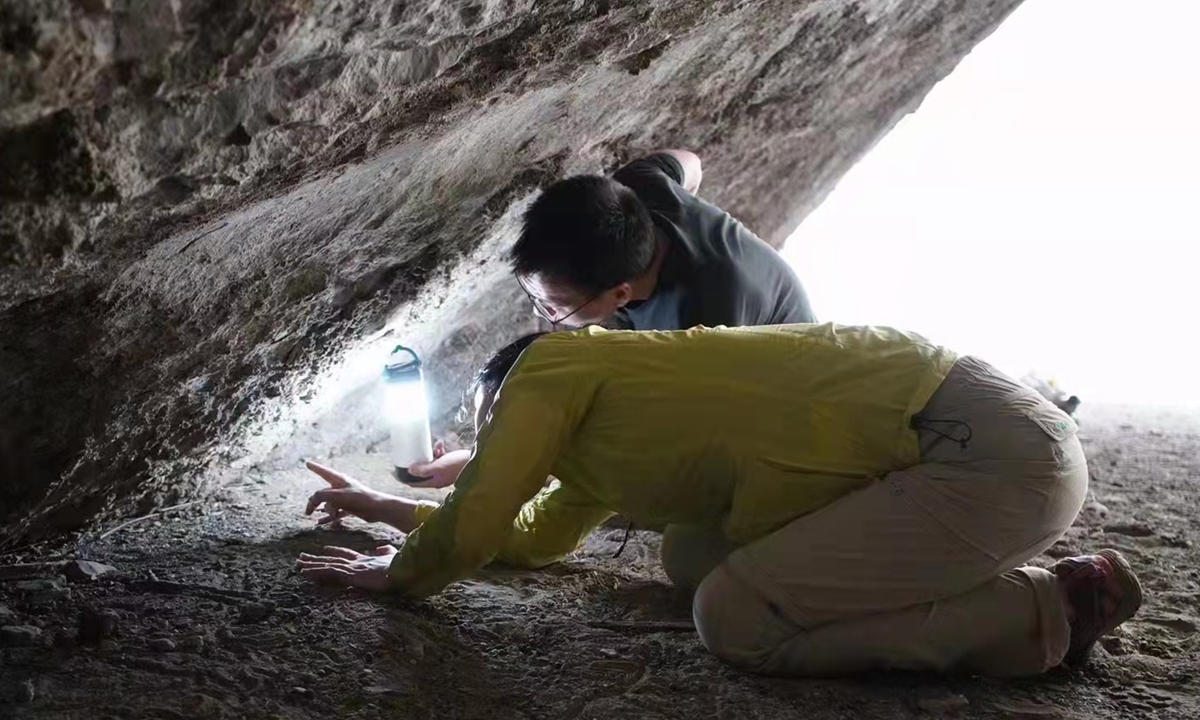
Jinsha River rock paintings and researchers in the Wanrendong cave Photos: Courtesy of Shao Qingfeng
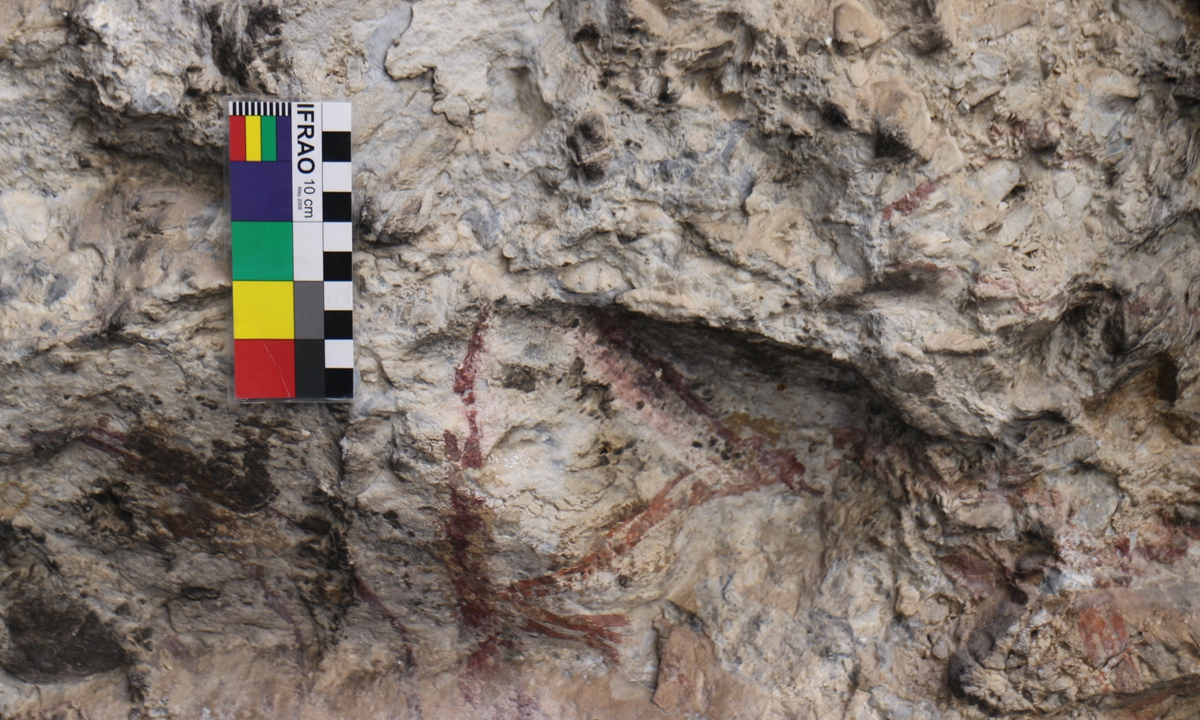
Jinsha River rock paintings and researchers in the Wanrendong cave Photos: Courtesy of Shao Qingfeng
Using the U-series dating technique, scientists in China have managed to narrow down the age of ancient rock paintings along the Jinsha River in the Southwest China's Yunnan Province to more than 13,000 years ago. The newly revealed age of the Jinsha River rock paintings makes them the oldest art legacy on rock ever found in East Asia.
Oldest in East Asia
The oldest of these paintings is located in Wanrendong cave in Tiger Leaping Gorge, which sits along the middle section of the Jinsha River. The cave is home to the most representative Jinsha River rock paintings.
Using high-precision uranium-series, or U-series dating techniques, scientists were able to test carbonate substances in the paint.
"We used an indirect dating method to analyze the carbonate substance attached to the rock paintings that infer the absolute age of the paintings," Shao Qingfeng, a core member of the research team, told the Global Times.
The new discovery also means the paintings are the first rock paintings in East Asia to be confirmed as dating to the Paleolithic Period.
According to Shao, dating rock paintings is extremely challenging due to the difficulties involving collecting samples as well as the variety of the materials used. As such, many of these ancient paintings around the world are unable to be accurately dated.
"It was a gift that we were able to find carbonate substances in the Jinsha River rock paintings," Shao noted.
The colors of the paintings in the Wanrendong cave range from purplish red to dark orange-red. The paintings use a realistic style to mainly depict animals such as boars, sheep and wild bears, but human figures using bows and arrows can also be seen.
The Jinsha River rock paintings were first discovered in 1988. Over the years, more than 70 rock painting sites have been found in the region, making it one of the most abundant troves of rock art in the world.
"Comparing these to others in Southeast Asia, like in Myanmar, the similarity of style shows signs of the cultural exchanges brought about by human migration," noted Shao.
World heritage status
The Jinsha River rock paintings are not the only example of this ancient art in China. These types of paintings have also been found in the country's northern grasslands and the mountainous regions in South China.
The Zuojiang Huashan Mountain rock paintings in South China's Guangxi Zhuang Autonomous Region were discovered along the Zuojiang River and its tributary the Minjiang River. The largest and best-preserved collection of rock paintings in China, they were created between the Warring States Period (475BC-221BC) and the Eastern Han Dynasty (25-220).
"Though the history of the Zuojiang rock paintings is much shorter than that of the Jinsha River rock art, it is an important world heritage that fills in a blank in China's rock art history," Shao said.
In 2016, the Zuojiang Huashan Rock Art Cultural Landscape was listed as a UNESCO World Heritage site, making it China's 50th world heritage contribution.
"The rock paintings along the Zuojiang River are mainly abstract human figures. It is like a concise exhibition of the ritual habits of the people at that time," Zhang Tengbin, a fresco art expert, told the Global Times on Monday.
Unlike the Guangxi rock paintings' focus on "human ritual activities" and the Jinsha River paintings depiction of ancient Palaeolithic hunting life and animal species that have disappeared in the modern age, the Cangyuan rock paintings, also in Yunnan Province, shows a more even proportion of human figures and animals.
"In some of the paintings, you can see a human figure leading cattle. This depicts early agricultural activities in the area," Shao explained.
Discovered in 1965, the rock paintings date back to the Bronze Age. They outline the social and economic conditions of the ethnic minority groups that lived in Southwest China at that time.
"From the oldest to the relatively recent ones, these rock paintings depict the Chinese civilization. Perhaps we will discover the even older ones that will help update our timeline of history," Shao emphasized.
So far, the earliest known abstract drawing was discovered in the Blombos Cave in South Africa. More than 73,000 years old, it dates back to the Middle Stone Age.
Shao noted that the Jinsha River painting site has the potential to enter the World Heritage Site list thanks to their depiction of the natural world and human history.
